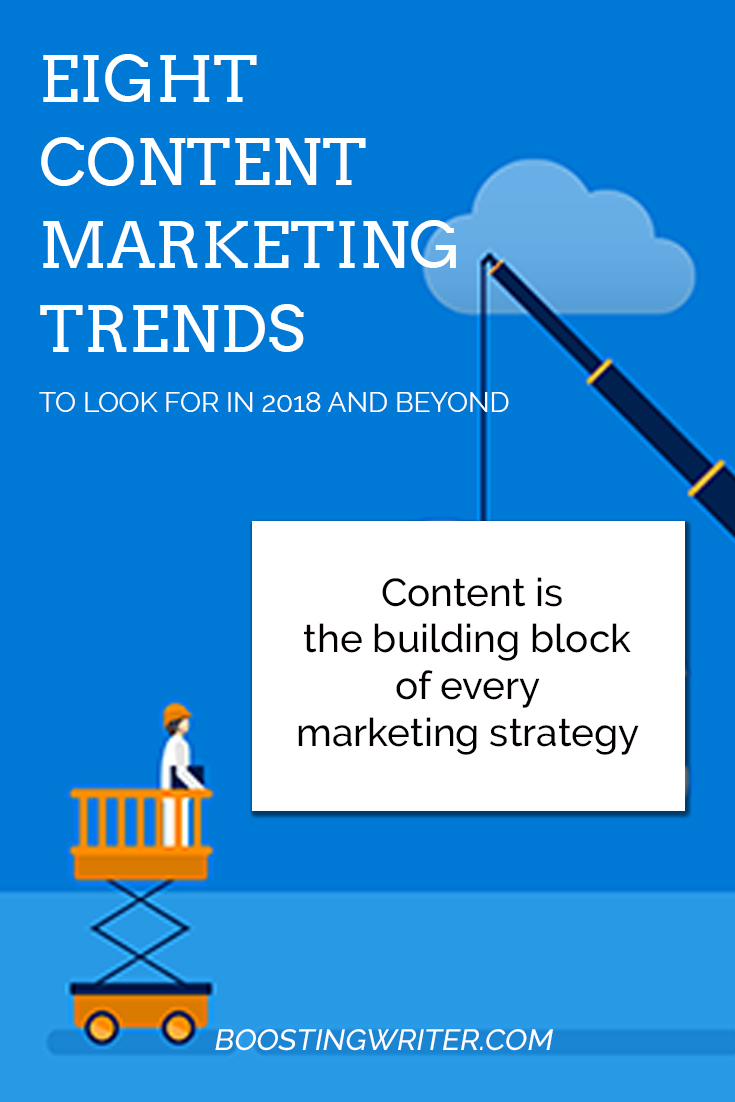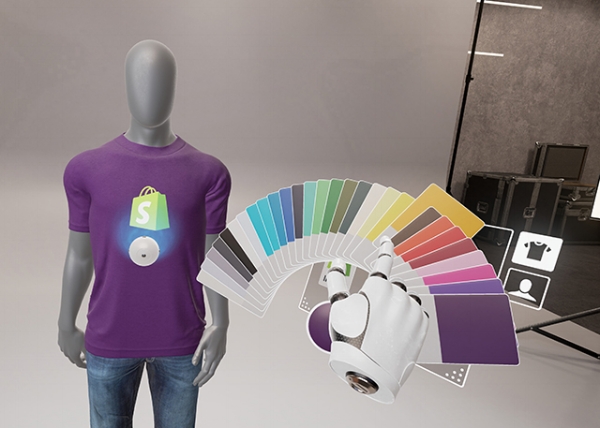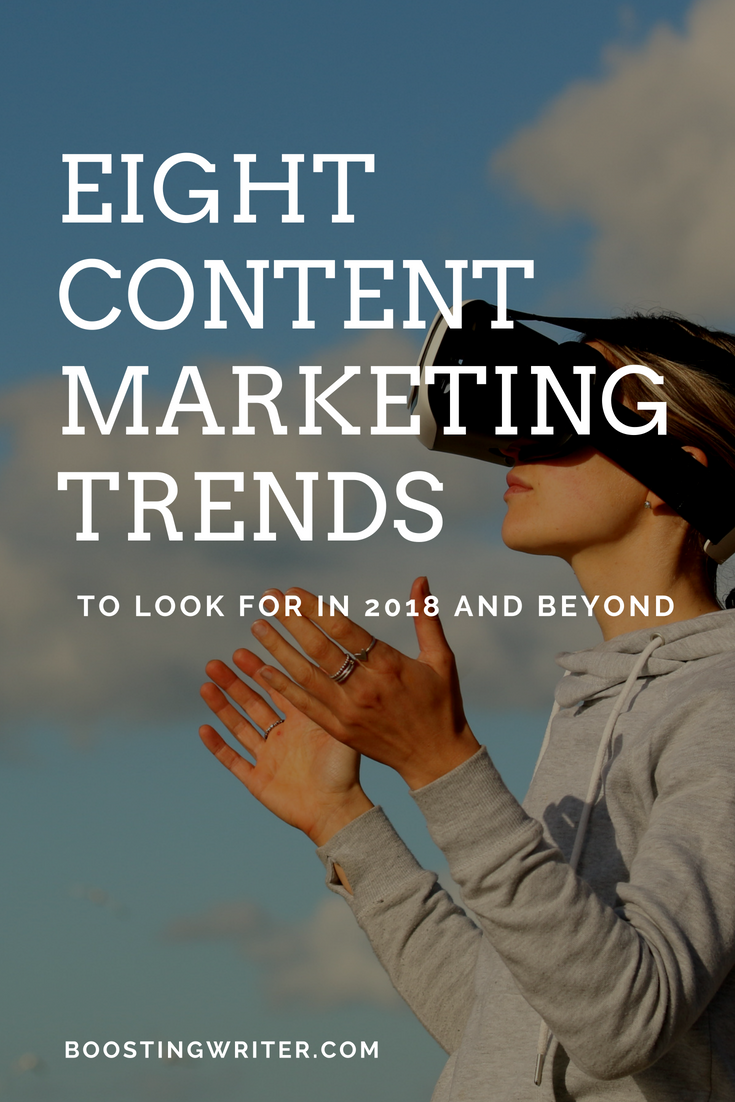8 Content Marketing Trends To Look For In 2018 And Beyond
As every beginning of the year, I like to read through the major industry reports and see what the upcoming year will bring us in terms of content marketing, social media, online behavior and graphic design.
It’s amazing how fast things can evolve in 12 months – and 2017 was certainly no exception. But one thing is clear: we can be sure 2018 will be just as packed with new digital features, challenges and opportunities.
Here are 8 content marketing trends that I believe are most important for you to follow this year to ensure your content investments are delivering adequate returns for your business in the long-term.
Content is the building block of every marketing strategy
If you understand communication in general and especially digital marketing as a whole, you’ll see there’s no tactic or channel that can stand by itself without content.
Think about all the marketing tools a business uses on a daily basis to communicate with its audience:
- social media posts
- blogs and articles
- email marketing
- lead magnets
- visual media and videos
- landing pages
to name just a few of them. Even paid advertising needs to have worthy content to drive conversions. That’s why we could consider it as the “atomic particle” of all marketing efforts.
As the Content Marketing Institute shows in its “B2B Content Marketing: 2018 Benchmarks, Budgets, and Trends – North America”, content marketing will continue to grow in 2018.
Content catches the attention of your audience and builds the trust with your brand. So, instead of focusing on creating just the top-of-the-funnel content, you should consider switching to supporting every stage of the buyer’s journey.
Moreover, your content will need to be more diverse, purposeful, nurturing, and interconnected to provide a great user experience, gain trust and create vocal ambassadors for your brand.
Video marketing – is the KING!
Yes, video content is the KING, and it will still be for the upcoming years. The idea that brands need a video marketing strategy isn’t new. But the importance the video gets on every channel has changed.
Video is no longer just a piece on the marketers’ chess table. It needs to play the central role in your marketing efforts.
Video is here, and it’s here to stay for a long time. Consider this:
- According to Cisco, the global internet traffic from videos will make up 80% of all internet traffic by 2019
- 4X as many consumers would prefer to watch a video about a product than to read about it.
- An upcoming report from HubSpot Research shows that 54% of consumers want to see videos from brands they support in comparison to email newsletters (46%) or social image (41%) based content.
- 87% of marketers use video in their campaigns
- video viewers retain 95% of the message, while the readers of a text retain just 10%
- Using the word “video” in an email subject line boosts open rates by 19% and clickthrough rates by 65%.
Facebook, Snapchat, Instagram, and Twitter are all investing in video to help generate engagement and build followers.
As part of video content, you should also consider live video. According to Facebook, users spent 3x more time and comment 10xmore time during the live video. While almost 60% of marketers use video content, only 14% have committed to use live video.
Consumers also seem to be receptive. And it’s a good reason for this. Live streaming leads to a greater human connection. It feels closer to the audience and encourages a more engaging experience.
Not enough to convince you? Maybe this survey from Livestream helps you change your mind:
- 80% of respondents preferred live video from a brand compared to a blog post
- 82% preferred live video to social posts.
You should take a step ahead of your competitors and start working with live video to attract the attention and engagement of your audience. You’ll become more authentic to your viewers and that’s what they are looking for.
Interactive visual content
Ok, live video is super engaging and surely interactive. But the technology development offers new opportunities to provide an entirely different visual experience to your users. I’m talking about virtual reality.
For example, Thread Studio is the new VR app from Shopify that helps online shoppers customize shirts in virtual reality.
Even if VR and AR have been announced to be the “big thing” for a few years, they haven’t managed to until now. But according to John Hall, Co-founder, and CEO of Influence & Co, „2018 will be the year in which we will see it happen”. In fact, 30% of Forbes Global 2000 consumer-facing companies will experiment with augmented and virtual reality this year.
The revenue forecasts from Digi-Capital reports an estimated growth to $108 billion for AR and VR by 2021. Also, the predictions from International Data Corporation are equal optimistic. They estimate that revenues will increase from $5.2 billion in 2016 to more than $162 billion in 2020.
AR/VR is a whole new world for marketers, and maybe you don’t want to jump into it just yet. That’s understandable, but you also shouldn’t ignore it. You could just view this trend as a reminder to improve your visual content and start to create interactive graphics, videos, and apps.
Voice-driven content
Remaining in the same area of interactivity, customers are no longer limited to stay stick on the screen for getting content. Lives have become busier than ever and emerging trends like Internet of Things (IoT) will take over the world of the content marketing.
Think about how we interact with devices and new technology now, like Siri or Google Assistant. You talk, and they respond, providing you with call-and-response content on the fly.
Also Alexa, the Amazon’s voice service is becoming a digital doorway to the digital content.
Many organizations already use it to share content with a much wider audience that doesn’t want to be tied to a screen. Amazon’s Marketing and Brand Guidelines help you integrate Alexa into your marketing, including packaging, promotional materials, and advertising.
You’ll find also plenty of opportunities in the B2B space. All you have to do is think about what your customers are looking for and find the best way to give it to them. As we’re at a point where everything is becoming digital, you should think about content and your customer’s engagement in the new context.
Transparency is becoming as important as the content itself
With so much branded content, the customers are getting tired by brand advertising. And I’m not just talking about the generation that’s been exposed to the traditional advertising.
It’s true that millennials are more progressive and want companies to be more authentic, transparent, and driven to give back to society. But consumers overall want that same transparency.
Nielsen’s Global Trust in Advertising Survey shows where consumers are putting their trust.
As you can see, regardless of the geographic region, the recommendations from people they know comes on the top, with over 78% trust.
Compare this to television ads (max. 72%), brand sponsorships (max 73%), online video ads (max 55%), social media ads (max 57%), and ads on mobile devices (max 50%). There is a huge gap.
At the same time, there’s a growth of influencer marketing and endorsements and this is more important than ever in creating strong relationships with the cautious customers. This means brands need to focus on transparency and honesty.
For gaining (and maintaining) the trust of your audience, the next phase of influencer marketing and branded content is to ensure that anything you create is fully transparent.
The convergence between the paid, owned, and earned media
Over the decade, content has been created and defined as part of one of the following three categories: owned media, earned media and paid media. For a long time companies had controlled the channels where their content was alive and most of them still do.
But due to expanding of social media and other channels, also the way we interact with our audience has evolved. The lines between owned, earned and paid started to blur, to the point where they barely differentiate from each other.
This means content can’t live in silos anymore, with one team focusing on owned channels like the blog and another team worrying only about paid media.
For your content strategy to be effective, actually, your teams need to work more closely with each other in 2018 to support your whole content marketing strategy across all digital channels.
Mobile marketing
Consider these stats and facts:
- according to comScore’s 2017 U.S. Cross-Platform Future in Focus report, 69%of digital media time is spent on mobile and will continue to grow to 75,9% by 2020
- Worldwide, $143 billion will be spent on mobile ads in 2017 (twice that of $71 billion in 2015), according to Moinstall
- BIA/Kelsey reveals that location-targeted mobile ad spend will grow from $12.4 billion in 2016 to $32.4 billion in 2021
So, it’s no longer a news that the world is moving to the mobile devices. Also, Google announced that mobile-first algorithm is expected to launch in early 2018. With this change, Google will primarily index mobile content and use it to decide how to rank its results, regardless of whether you’re on desktop or mobile. There will be no longer some type of “mobile-friendly” adjustment done just for mobile users.
The message is clear. If you want to stay competitive in the marketplace, a first-class mobile experience is now essential.
Social Media Marketing
It gets harder and harder to reach your intended audience on social media, with updates and changing algorithms. And, honestly, no business is safe - you have to fight for your social presence.
However, for most B2B and B2C brands, increased exposure and traffic rank on the list of their accomplishments, with 88%, respectively 78%.
Overall, B2C marketers are investing more in platforms such as Instagram, Facebook and Pinterest while B2B marketers focus on Facebook, LinkedIn and Twitter.
In past years, LinkedIn was the top contender for B2B brands. But for the first time, in 2017 Facebook has passed LinkedIn as the most important platform for B2B marketers (43% versus 37%).
2018 is going to be the year for strategic, actionable social media plans for local businesses and large brands alike.
The development of the technologies and innovations allows the development of powerful social media features and concepts.
However, here are some social media marketing strategies that will change the face of social media marketing in 2018:
- Influencer marketing has seen a great light in 2017 and it’s going to continue in the coming years. More brands will build more relationships with influencers at different levels — mega-Influencers, macro-Influencers, and even micro-Influencers. Besides, over 90 percent of marketers who employ an influencer marketing strategy believe it’s successful.·
- Increasing popularity of Instagram Stories: The number of people using Instagram stories is constantly on the rise. More than 200 million people are using Instagram stories each month. And this, in just one year after launching. At this rate, almost half of Instagram users will be using Instagram Stories by the End of 2018.
- Video will continue to grow. Facebook recently introduced Watch, an original video platform. Facebook has been pushing video content for some time now, and an internal study suggests that video consumption on Facebook and Instagram is only poised to increase.
Conclusion:
The trends I’ve listed here are supported by data, but they aren’t everything. Instead of chasing and blindly following them, you should do your research. Keep an eye on the latest data, experiment and see how they can improve your own content marketing strategy in 2018.
Y

















